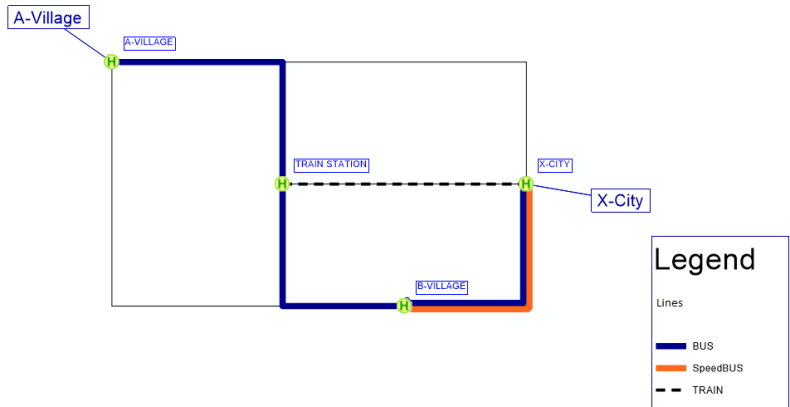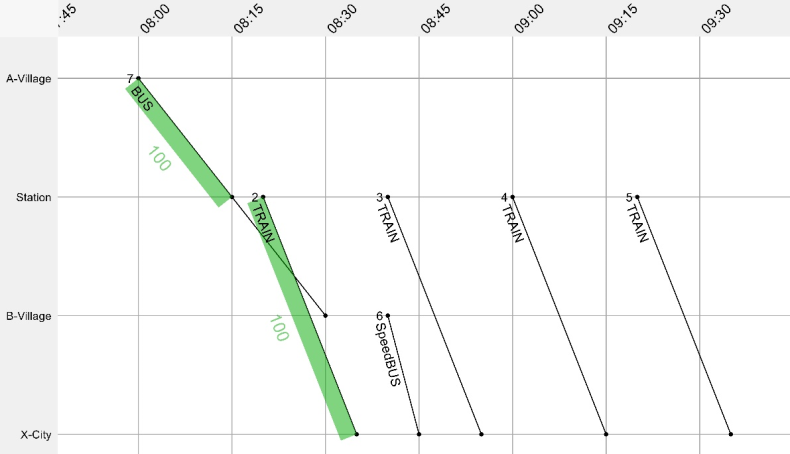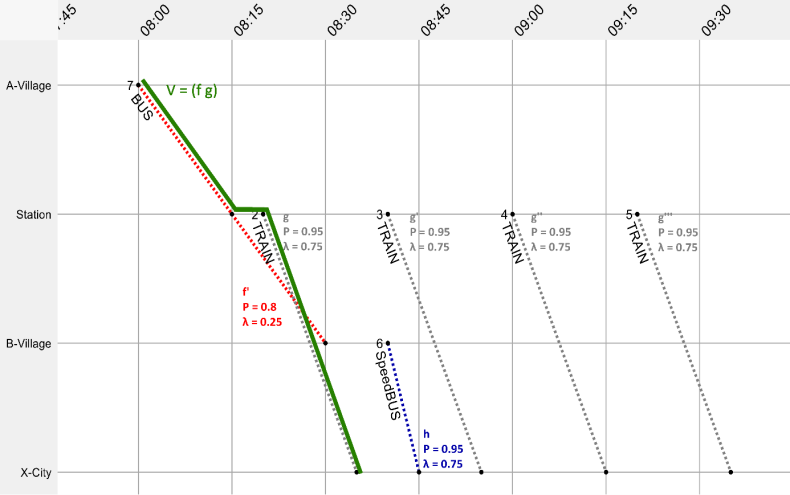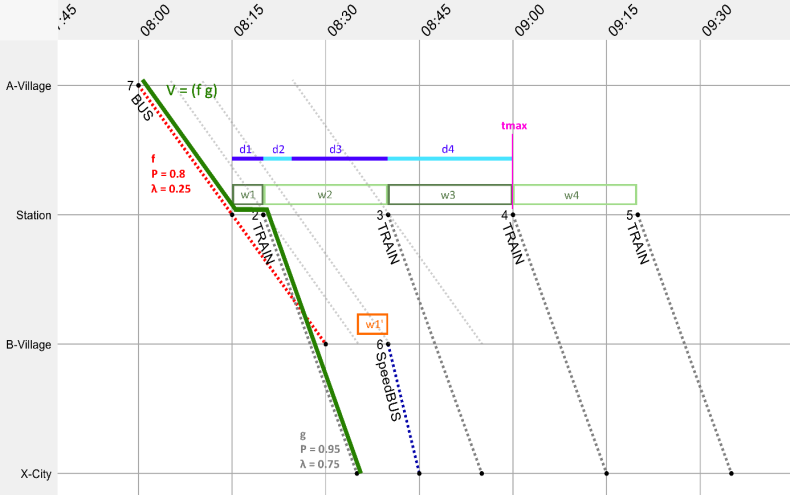A network with a public transport supply of three lines and a timetable is provided (Illustration 167).

Illustration 167: Example network delay analysis
It is not possible to walk between the stops. There is a bus from A-Village to X-City, a train from Train Station to X-City and an express bus from B-Village to X-City. Between the zones B-Village and X-City there is a demand of 100 persons for the analysis period. The result of timetable-based assignment is also shown in the timetable. 100 people use connection V that first takes the bus from A-Village to Train Station and then switches to the train to X-City.

Illustration 168: Volumes on connection V
In the following, we will look at the delay analysis for vehicle journey item f (departure at 8:00 a.m. from A-Village and arrival at 8:15 a.m. at Train Station). Delays of up to 45 minutes are analyzed. A delay of 1s or more is considered relevant. If no alternative connection is found, a travel time extension of 1h is assumed. A maximum delay time with an exponential distribution value greater than 0.000001 is considered. For other parameters of punctuality probability and Lambda values, see Illustration 169

Illustration 169: Punctuality parameters and Lambda
In a first step, delay situations must be determined using the possible connections at f and the connection V = (f g) that includes f (Determining delay situations). This results in the following delay situations and probabilities of occurrence in the respective intervals Illustration 170.

Illustration 170: Delay situations with probabilities of occurrence
Overall, the risk for transfer u of connection V after vehicle journey item f and the alighting risk of alighting a of connection V after vehicle journey item g is as follows:

For connection V, this results in a delay risk of 48 seconds. Multiplied by the volume for connection V, the total delay risk is 1h 20min. The proportion of relevant delayed passenger journeys is derived as follows:

Multiply the proportion by the volume and you obtain the number of relevant delayed passenger journeys of connection V. There are approximately 10.36 passenger journeys with a relevant delay.

